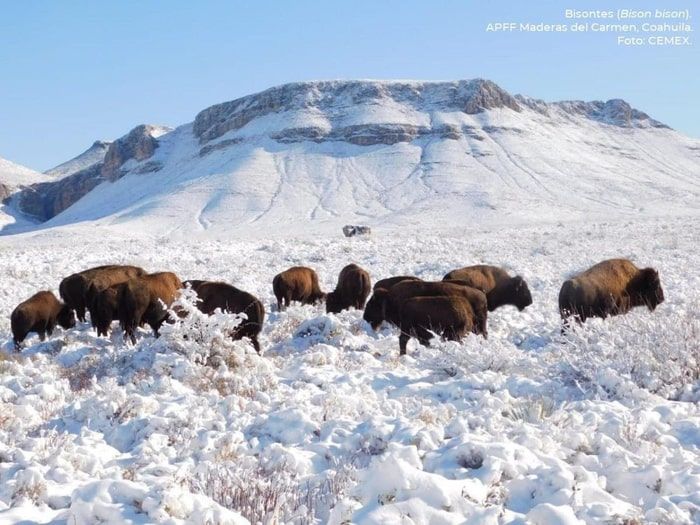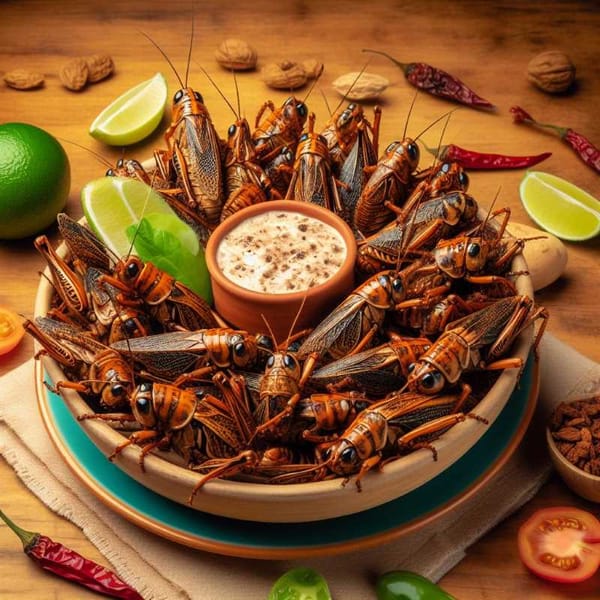Mexico reintroduces the American bison 100 years after its disappearance
The second herd of American bison, the largest on the continent, has successfully established itself on the plains of Coahuila.

The vast plains of the State of Coahuila - located in the northwest of the country - attract the attention of Mexicans these days because of the beauty of its snow-white fields, but also because an old inhabitant of these regions has returned to graze freely: the American bison, the largest land mammal in the Americas, has been successfully reintroduced by the environmental authorities, 100 years after its extermination due to indiscriminate hunting and the destruction of its habitat.
The animal, also known as buffalo, was the king of the vast fields of northern Mexico and the plains of the United States and Canada, where they grazed in huge herds. 300 years ago, according to the National Commission of Natural Protected Areas (Conanp), there were between 30 and 60 million bison in North American territory, but "by 1880, unfortunately, the population was reduced to just over 1,000 individuals, due to the destruction and fragmentation of the grasslands, disease, and hunting". Thanks to a joint project involving environmental authorities, universities, scientists, and with the support of the U.S. National Park Service, the huge mammals returned to graze in Mexican territory.
The project to reintroduce the American bison began in November 2009, when the first herd of 23 buffalo was released from Wind Cave National Park - located in South Dakota (United States) - as part of a collaboration between Mexico and the United States to recover the species, which in 2016 President Barack Obama declared as the First National Mammal. This first herd was introduced into the Janos Biosphere Reserve in the State of Chihuahua, with the hope that they would repopulate their former territories.
Maria Luisa Albores, head of the Ministry of Environment and Natural Resources (Semarnat), reported triumphantly this Thursday through her Twitter account and showing images of the animals grazing in the snowy fields, that the second herd of American bison, introduced last year, has managed to settle in Coahuila, demonstrating the success of the program to recover the species.
This second herd is composed of 19 animals, which join the 200 that already populate the north of Mexico. "The establishment of herds in Mexico contributes significantly to the recovery of the species on a continental scale and is an example of success in the recovery of species at risk through the close collaboration of various actors in society," explained Conanp.
The bison is a relatively calm animal, which spends its days eating grass, although it is also an agile mammal, capable of running at about 60 kilometers per hour. In spite of the placidity with which they travel through the fields, it is a giant that can intimidate with its more than 1.60 meters of height and a weight that can reach more than 1,000 kilograms. In times of jealousy, the males can get involved in hard confrontations with goring by the females of the herd.
It was an important source of food and skins for the native peoples of North America, whose culture and survival was linked to this animal. The historian Andrew C. Isenberg, quoted by the American magazine The New Yorker, explains in his book The Destruction of the Bison, that the massacre of these mammals began in the 1970s, when the animals were hunted for their skins to be used in the new factories that were opening across the United States. The animal's bones were also used to make fertilizer. For U.S. authorities, says Isenberg, the elimination of the buffalo was "a triumph of civilization over savagery".
Despite the success of the program to repopulate the northern plains with these mammals, Mexican authorities admit that the bison is still an endangered species. The main threats that put them at risk are the expansion of the agricultural frontier and hunting, as well as the lack of incentives for ranchers in the northern states of the country to raise and care for them. Still, Secretary Albores was satisfied with what she had accomplished, posting on her Twitter account photos of the animals grazing peacefully in herds in the beautiful, snow-covered fields of Coahuila.




